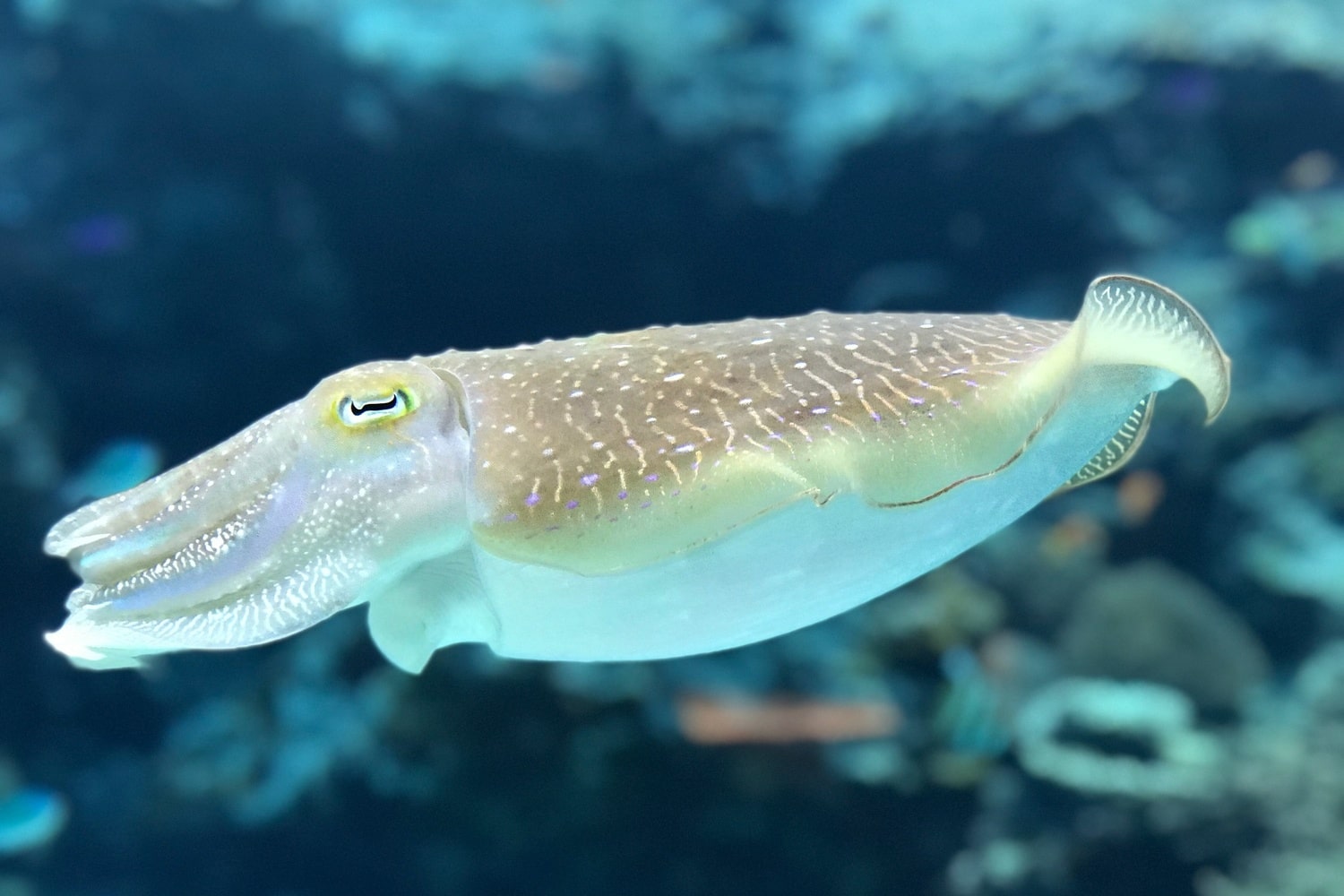Squid are fascinating creatures that inhabit the depths of oceans and various water bodies around the world. They belong to the group of cephalopod mollusks and possess unique abilities that make them some of the most intriguing residents of the marine depths. Squid have a complex body structure, a high level of intelligence, and diverse defense mechanisms that help them survive in harsh environments. In this article, we have gathered captivating facts about squid that you may not have known but that will broaden your knowledge of these incredible animals.
- Squid have a long, muscular body with ten arms — eight shorter ones and two longer tentacles used for catching prey. These arms are covered with suckers or hooks, allowing them to firmly grasp their catch even in strong currents.
- Squid move using a jet propulsion system: they draw water into their mantle cavity and then forcefully expel it through a siphon, enabling rapid movement and escape from predators. This ability makes squid among the fastest invertebrates in the ocean.
- Squid possess a sophisticated nervous system and are considered some of the most intelligent invertebrates. They can learn, solve simple problems, and display complex behaviors during hunting or interactions with other squid.
- For defense, squid can eject a cloud of dark ink, which helps them quickly disappear and disorient predators. This ink contains the pigment melanin and has a distinctive smell that further deters attackers.
- Some squid species can change the color of their skin using specialized cells called chromatophores. This allows them to camouflage themselves in their surroundings or signal danger or readiness to mate.
- The largest known squid species is the giant squid, which can reach lengths of over 13 meters. These creatures live in very deep ocean waters and have been the subject of numerous legends and scientific studies.
- Squid have three hearts — two pump blood to the gills, and a third pumps blood to the rest of the body. Their blood contains copper, which gives it a bluish color and helps transport oxygen efficiently in cold depths.
- Squid reproduce in large aggregations where females lay thousands of eggs on the seabed or aquatic plants. The young squid become independent almost immediately after hatching and lead an active lifestyle.
- Some squid can swim at speeds up to 40 km/h thanks to their jet propulsion, making them among the fastest invertebrates in the world. This speed helps them both in hunting and escaping predators.
- Squid use their large eyes, which are considered some of the best among invertebrates, to find prey and navigate in the dark ocean depths. Their eyes can adapt to minimal light, allowing them to see even in complete darkness.
- They feed on a variety of prey — from small fish and shrimp to other mollusks. Squid are active predators and can hunt alone or in groups.
- Scientists believe that squid communicate with each other through changes in color and body posture. This behavior helps them coordinate actions during hunting and avoid conflicts.
- Squid can regenerate lost arms, with regrowth taking several weeks. This adaptation is crucial for survival after encounters with predators.
- Due to their intelligence and unique physiological features, squid are frequently studied in biology and neuroscience. They help researchers understand mechanisms of behavior, adaptation, and nervous system function.
- Squid play an important role in marine ecosystems as both predators and prey for many fish species, whales, and seabirds. Their population and behavior influence the balance of oceanic food chains.
These interesting facts about squid reveal a world of amazing marine animals with unique traits and an important role in nature. They help us better understand ocean biodiversity and appreciate the remarkable adaptations developed by these creatures. Fascinating facts about squid provide a wonderful opportunity to learn more about these extraordinary inhabitants of the ocean depths.





